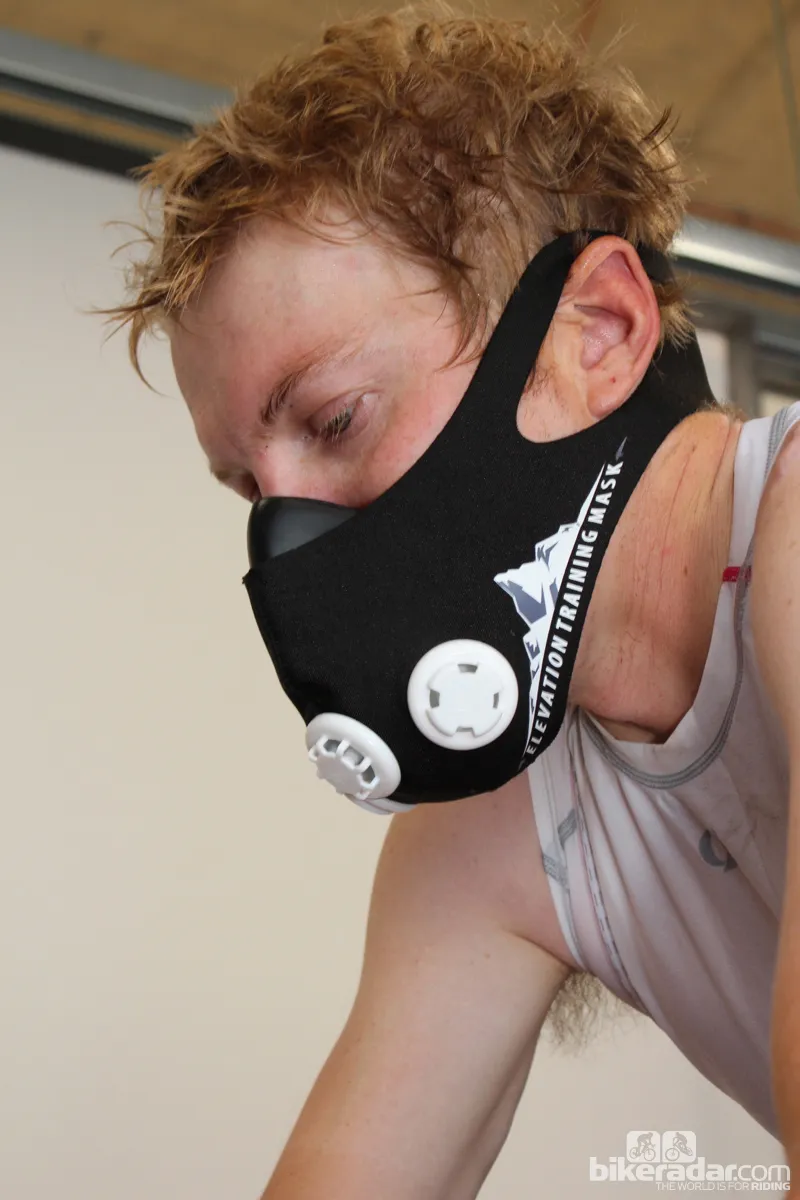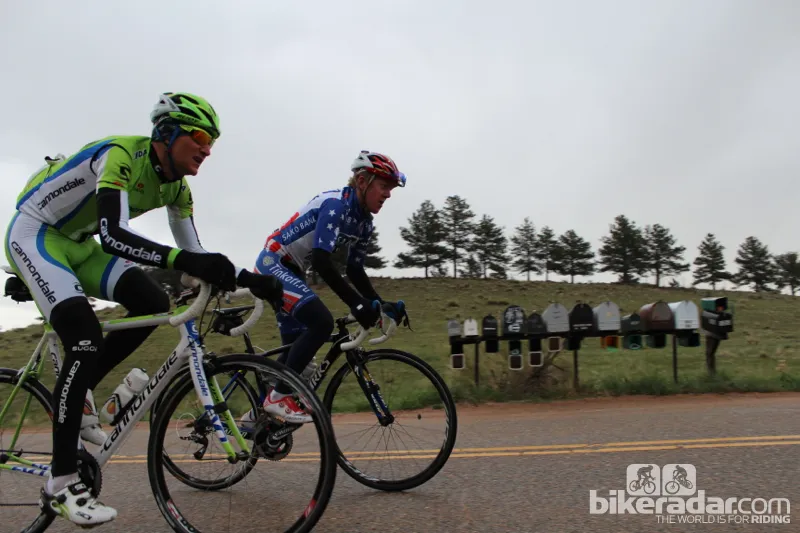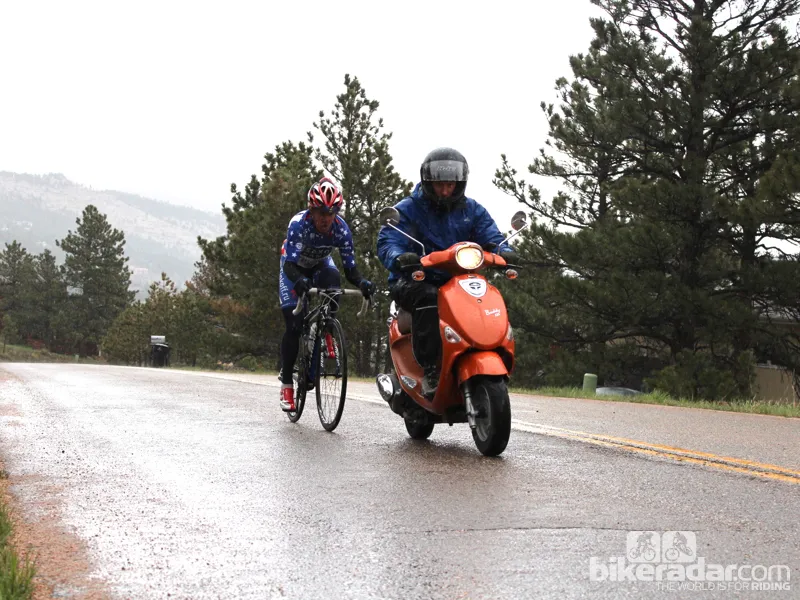Delivering oxygen to the leg muscles is the name of the game in cycling. To improve his power and speed, US national road champion Timmy Duggan and his coach Jon Tarkington are experimenting not only with supplemental oxygen intervals, but reduced oxygen intervals as well. In Boulder, Colorado (elevation 5,430ft/1,655m), BikeRadar followed Duggan for a day's training, which also included some motorpacing up and down hills.
It isn't uncommon for professional cyclists at altitude to use supplemental oxygen to simulate sea-level efforts. (The more oxygen your muscles get, the harder they can work.) Similarly, motorpacing to simulate the speed of racing is a time-honored technique. But because reduced oxygen intervals are less common in this sport, we'll begin there.
Reduced-oxygen intervals
“We are one hundred percent in the experimentation phase with this, which is a concept from the freediving community,” said Tarkington of FasCat Coaching.
Freedivers — athletes who deep dive without air tanks — have high hematocrits and use oxygen very efficiently for extending durations. Basically, they are great at holding their breath.
“With this, we’re just trying to create a physiological response to short-term hypoxic conditions,” Tarkington said.
The methodology is pretty straightforward. Duggan warms up on a trainer, then dons an Elevation Training mask that restricts his air flow and does two minutes on, two minutes off at a steady 190 watts, with his effort measured by his SRM power meter. The mask reduces his oxygen intake to less than half of normal, Tarkington said.
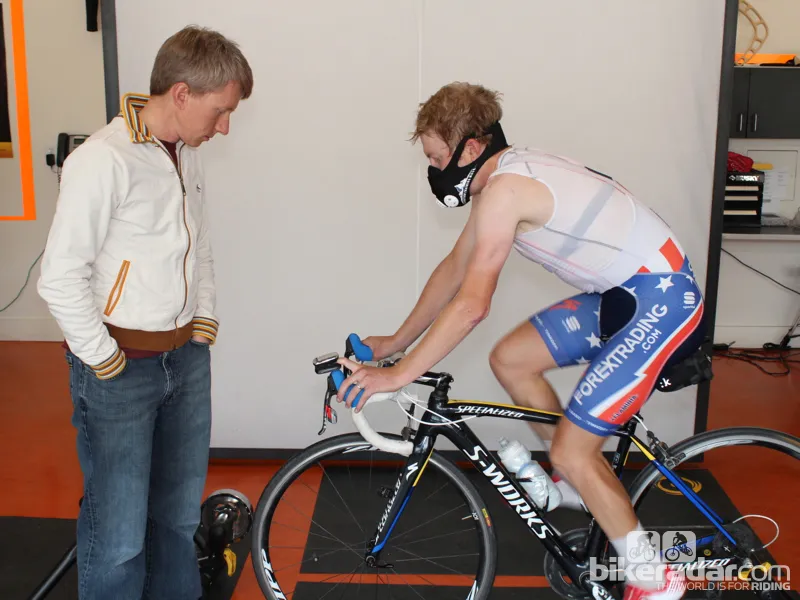
Coach Tarkington and Duggan are experimenting with reduced-oxygen intervals
“It’s like he’s breathing through a straw,” he said. “We drop the oxygen saturation, then raise it. This works the intercostal muscles – those between the ribs - that help you maximize lung volume.”
Tarkington tracks Duggan's oxygen saturation levels with a pulse oximeter. A normal blood-oxygen level is between 94 to 97 when at altitude. Tarkington will take Duggan down to about 80 before pulling the mask off.
In addition to oxygen levels, Tarkington also tracks Duggan’s heart rate over time.
At least one academic study has been completed on hypoxic interval training.
So, does it work? “For me, training is still a lot of experimenting, learning what you can and can’t do, what’s effective, what’s not,” Duggan said.
In other words, the jury is still out. But from Duggan and Tarkington’s perspective, it can’t hurt to try.
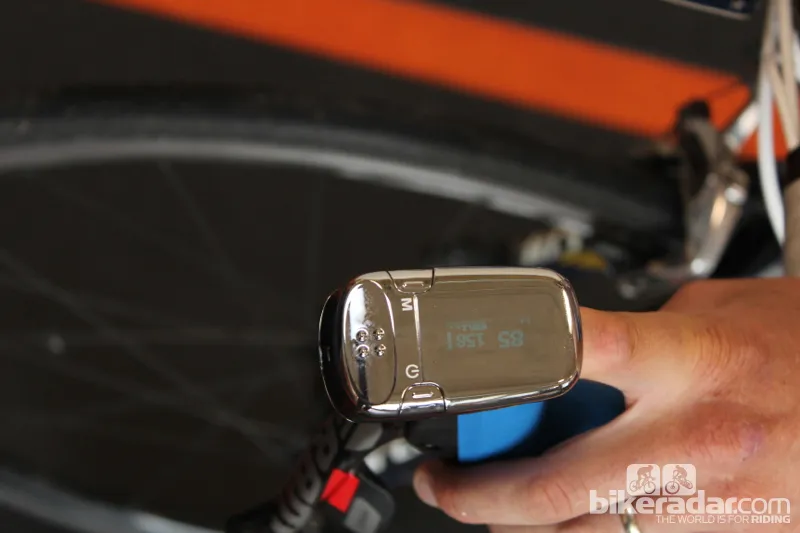
Tarkington tracks Duggan's oxygen saturation levels and heart rate with this pulse oximeter
Supplemental oxygen intervals
Spending time at altitude can increase a rider's hematocrit - the ratio of oxygen-carrying red blood cells to white blood cells. (A high hematocrit is very helpful in cycling, and many a rider has doped his way there.) But a downside to training at altitude means that a rider cannot produce the same power as they do at sea level.
"And that effect is most pronounced at the VO2 Max power range," Tarkington said. VO2 Max is the maximum volume of oxygen your body can effectively utilize during exercise. For cyclists, your maximum sustainable effort for 3 to 5 minutes is your VO2 Max power range. The higher you are, the less oxygen you get, and thus the less power you can produce.

Duggan breathes oxygen while doing intense Tabata intervals
"You can do a lot of short 10 seconds efforts here [at altitude] to replicate that. But it is almost impossible for a rider from sea level to hit their ultimate VO2 Max level here. By doing VO2 Max intervals with supplemental oxygen, you limit the loss of that training while living at altitude."
For Duggan, who lives at 8,230ft/2,500m in Nederland, Colorado, Tarkington prescribes Tabatas while on supplemental oxygen. Named for their inventor Dr. Izumi Tabata, these short but incredibly intense intervals consist of 20 seconds on, 10 seconds off for a total of three or four minutes. Sound easy? Try it. Or read this recent story on Tabatas on The Guardian.
Duggan incorporates these supplemental oxygen Tabatas into his regimen when he is at home. A training week consists of anywhere from 20 to 27 hours on the bike.
"For me, it's more situational," Duggan said. "Going back and forth between Europe, sea level, and my home in Nederland, it’s about balancing out living at extreme high altitude with being able to do some efforts at sea level."
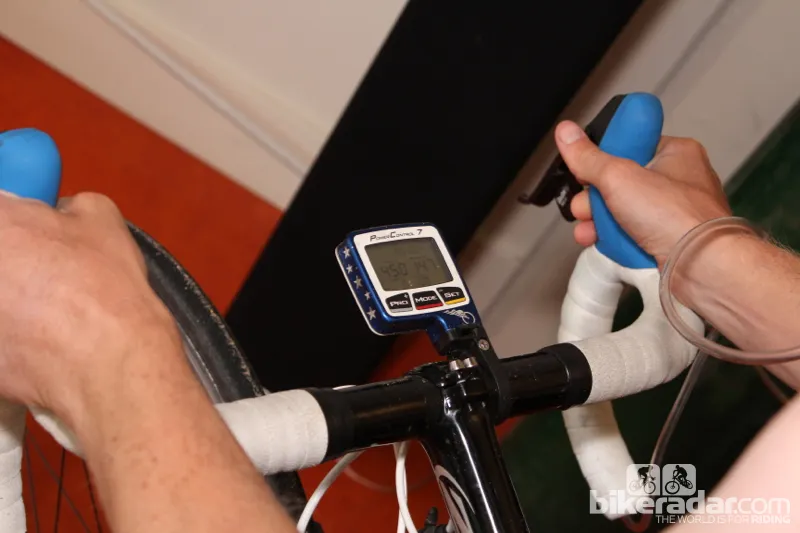
Duggan, who weighs 134lb/60.8kg, will push 450 watts during the 'on' period of the Tabatas
Motorpacing
To mimic race conditions, and to force himself to dig deeper when he is already going hard, Duggan motorpaces, which means he rides behind a scooter driven by his coach Tarkington.
A few days for the Amgen Tour of California, Tarkington took Duggan and his training partner Ted King of Team Cannondale head down a fast descent before hitting a hard corner and a sharp climb.
"For me, the mental aspect is more important than the physical aspect itself," Duggan said. "I come into a climb already f-ed, having gone hard. This simulates a race, where there will be attacking into the base of the climb. Then we go really hard for a couple minutes at the bottom of the climb. What I’m working on is training myself to go immediately at the critical moments when it’s already really hard and I’m f-ed. In racing you just have the split second to decide whether you are going to go all out and try to follow, or whether you are going to pull the rip cord."
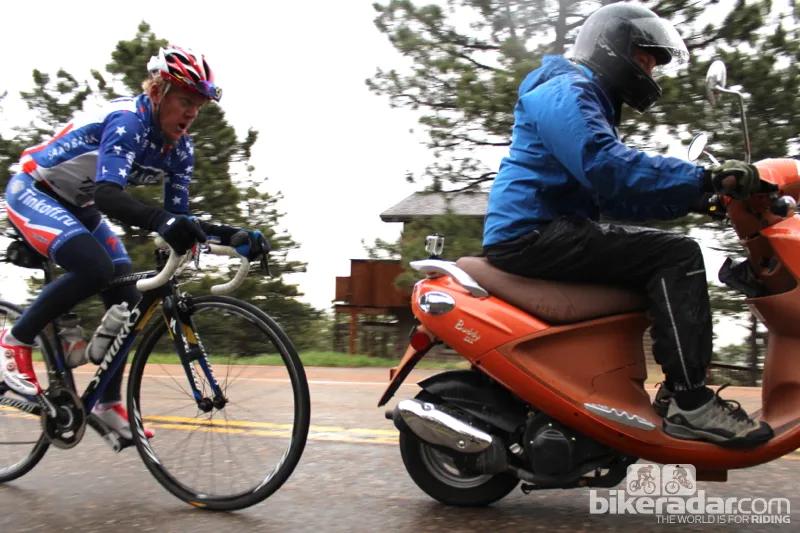
Duggan says motorpacing at race pace is as much about the mental training and the physiological
"The wattage isn’t so important, it’s just the simulation of going hard in a race, and then going harder, immediately, when the situation dictates it," he said.
Tarkington said that while an academic study might not find a difference in a solo training effort at a given wattage and cadence versus a motorpacing effort at that same wattage and cadence, there is definitely a difference. "It is dramatically different when you are chasing a rabbit," he said. "Everything is different behind scooter. One, you have more speed without having to generate the watts, so you can work on drafting and position. It's the difference between sitting on the front or sitting in the wind into that climb."
For both Tarkington and Duggan, the training process is one of discovery, with each challenging the other — and the power meter, the stopwatch and the race results judging the efforts.
